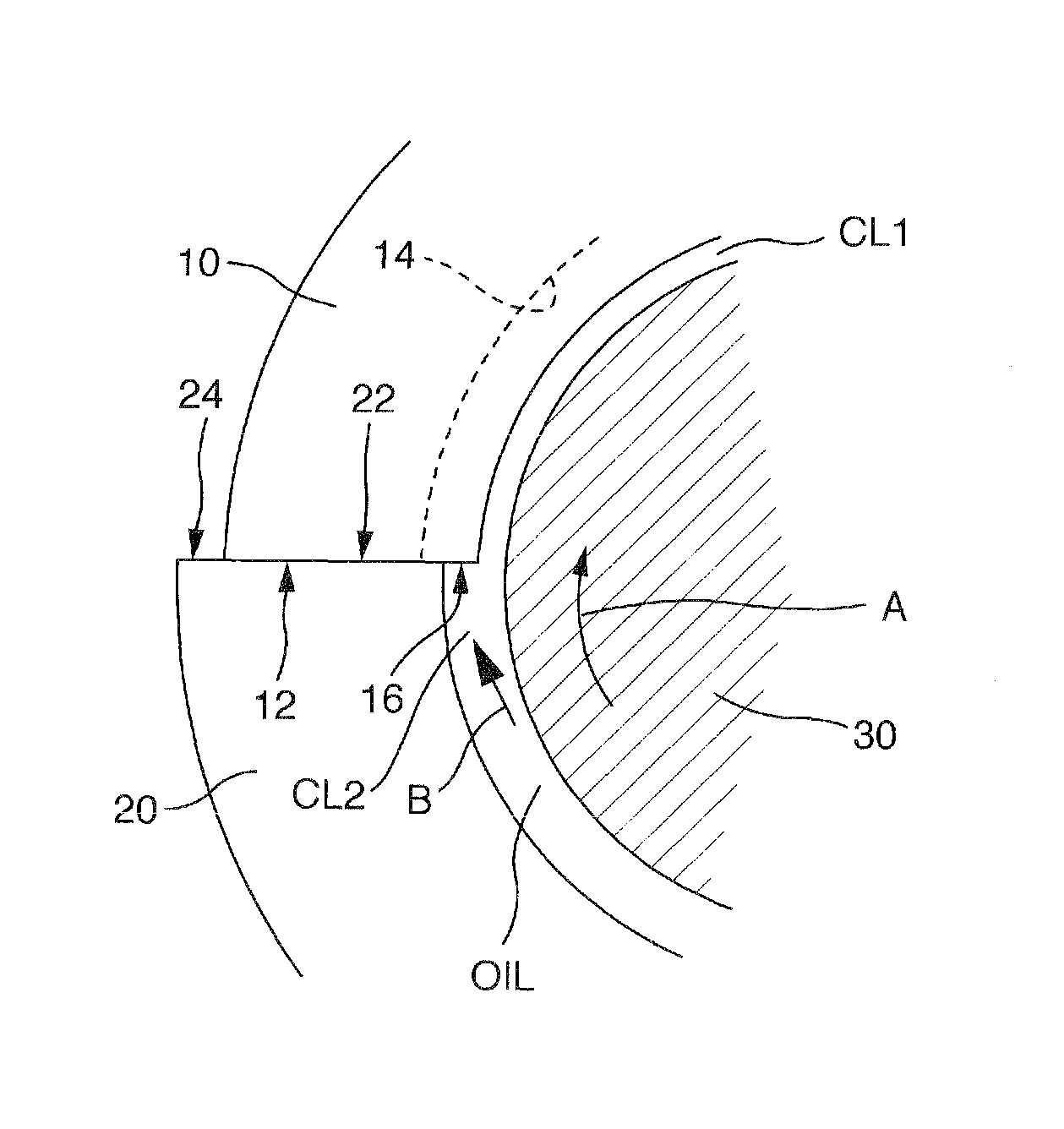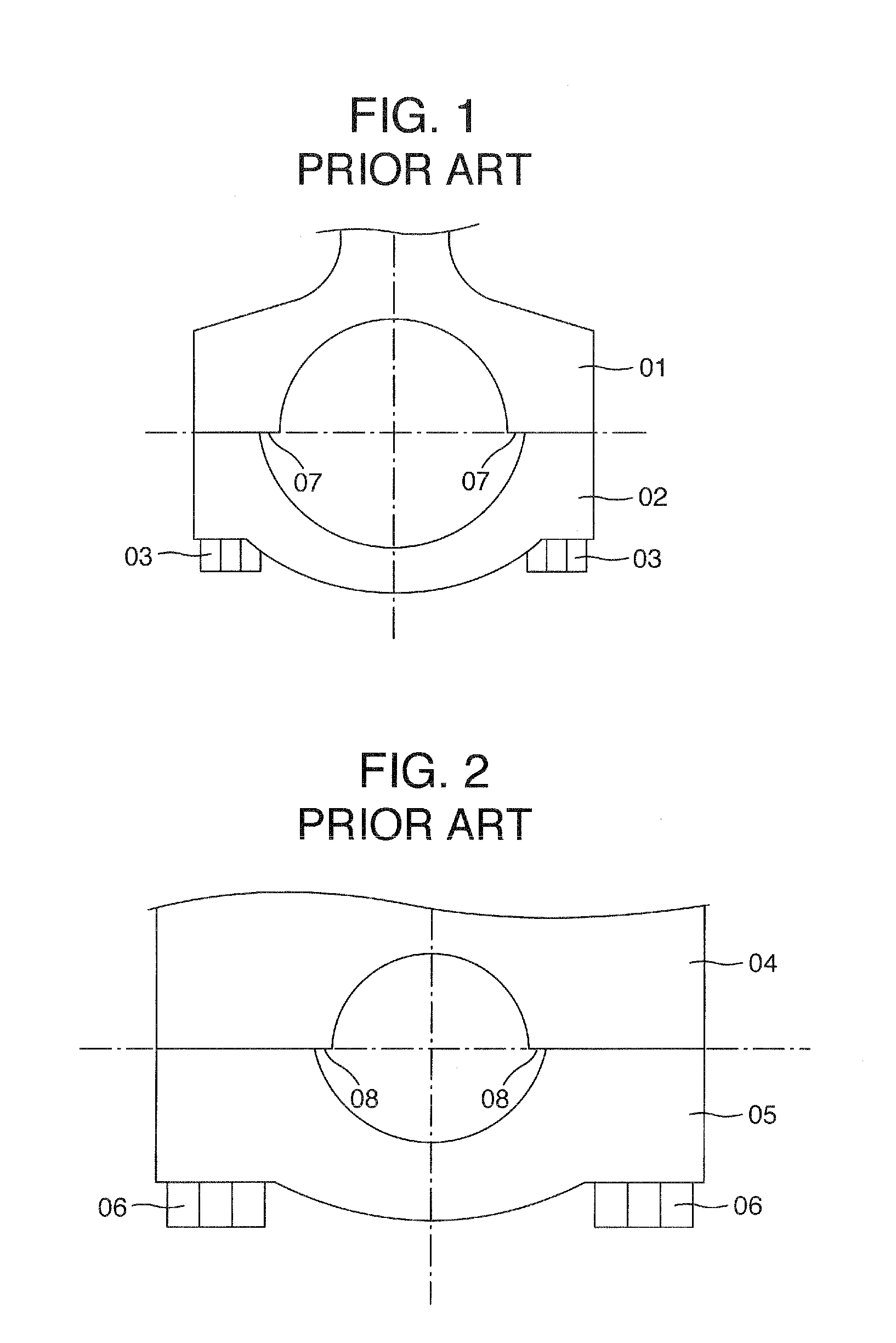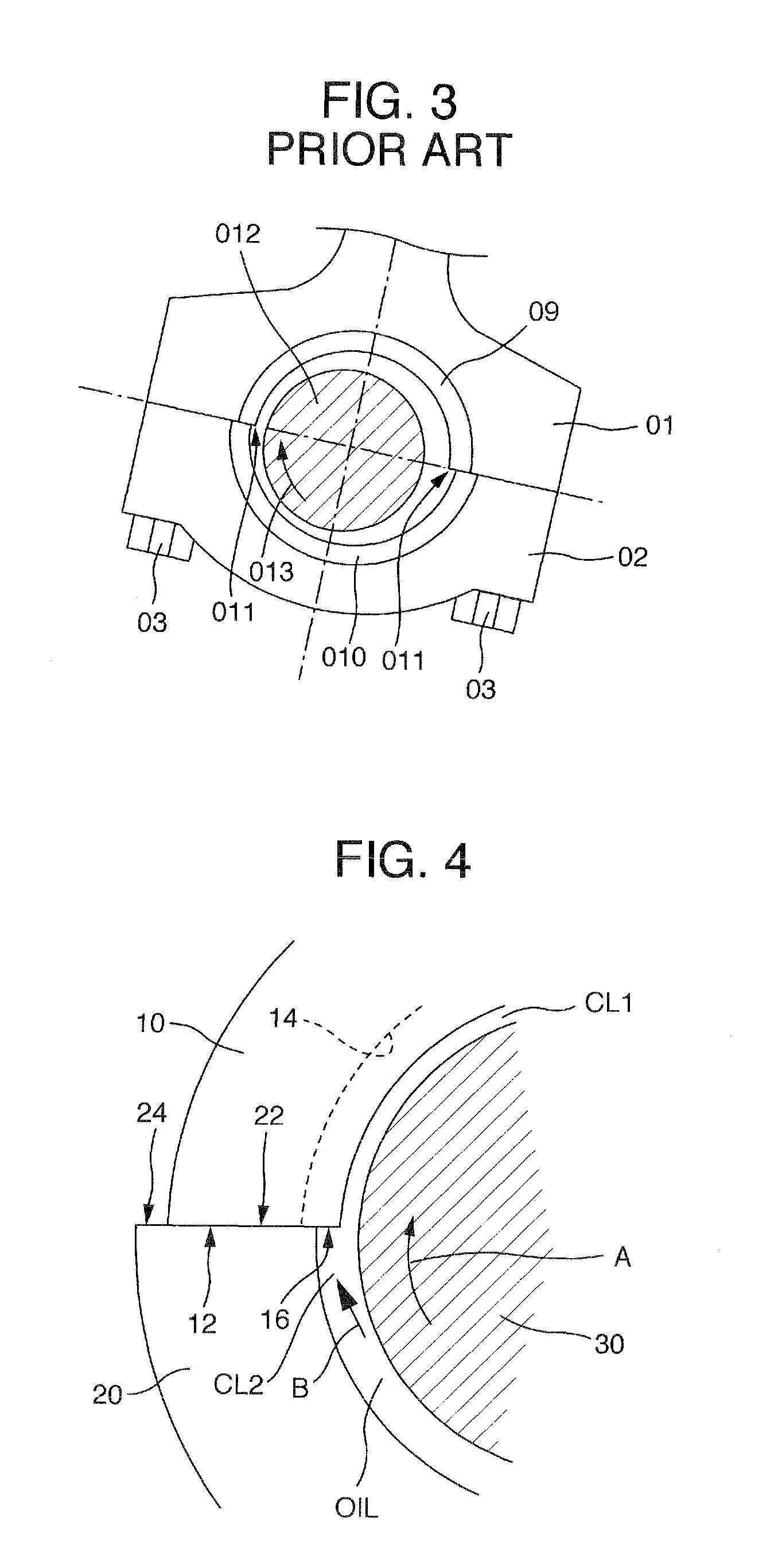Sliding bearing for internal combustion engine and sliding bearing device
a technology of sliding bearing and internal combustion engine, which is applied in the direction of sliding contact bearings, connecting rod bearings, bearing unit rigid support, etc., can solve the problems of bearing damage, abrasion or seizure, and the wiping phenomenon caused by the stepped difference cannot be avoided
- Summary
- Abstract
- Description
- Claims
- Application Information
AI Technical Summary
Benefits of technology
Problems solved by technology
Method used
Image
Examples
invention examples 1 to 4
(1) Invention Example 1
[0062]The circumferential grooves, having a depth of not less than 10 μm and a pitch of 0.5 to 1.5 mm, are formed throughout on the inner surface of a semi-circular bearing which is held on the big end part of a connecting rod. However, no circumferential grooves are formed on the inner surface of a semi-circular bearing which is held in a bearing cap. When the bearing cap is assembled to the big end part of the connecting rod by fastening bolts after the pair of semi-cylindrical bearings are combined with each other, the inner surface of the semi-cylindrical bearing held by the bearing cap is expanded outwardly in the circumferential end regions thereof as shown in FIGS. 4 and 8.
example 2
(2) Invention Example 2
[0063]The circumferential grooves having a depth of not less than 10 μm and a pitch of 0.5 to 1.5 mm are formed in the inner surface of a semi-cylindrical bearing which is held in the big end part of the connecting rod, in both circumferential end regions having an extent of a circumferential length corresponding to a circumferential angle α=10 to 50°. On the other hand, the surface roughness of not more than 3.2 μmRz is provided on the inner surface (i.e. a main load bearing region) except for the both circumferential end regions. No circumferential grooves are formed on the inner surface of a semi-cylindrical bearing held in a bearing cap. When the bearing cap is combined to the big end part of the connecting rod by means of fastening bolts after the pair of semi-cylindrical bearings are combined with each other, the circumferential end regions of the inner surface of the semi-cylindrical bearing held by the bearing cap is expanded outwardly in the circumfer...
example 3
(3) Invention Example 3
[0064]The circumferential grooves having a depth of not less than 10 μm and a pitch of 0.5 to 1.5 mm are formed throughout on the inner surface of a semi-cylindrical bearing which is held in the big end part of a connecting rod. However, no circumferential grooves are formed in the inner surface of the other semi-cylindrical bearing which is held by a bearing cap. When the bearing cap is combined to the big end part of the connecting rod by means of fastening bolts after the pair of semi-cylindrical bearings are assembled with each other, the circumferential end regions of the inner surface of the semi-cylindrical bearing held by the bearing cap is expanded outwardly in the circumferential end regions thereof, as shown in FIGS. 4 and 8.
PUM
 Login to View More
Login to View More Abstract
Description
Claims
Application Information
 Login to View More
Login to View More - R&D
- Intellectual Property
- Life Sciences
- Materials
- Tech Scout
- Unparalleled Data Quality
- Higher Quality Content
- 60% Fewer Hallucinations
Browse by: Latest US Patents, China's latest patents, Technical Efficacy Thesaurus, Application Domain, Technology Topic, Popular Technical Reports.
© 2025 PatSnap. All rights reserved.Legal|Privacy policy|Modern Slavery Act Transparency Statement|Sitemap|About US| Contact US: help@patsnap.com



